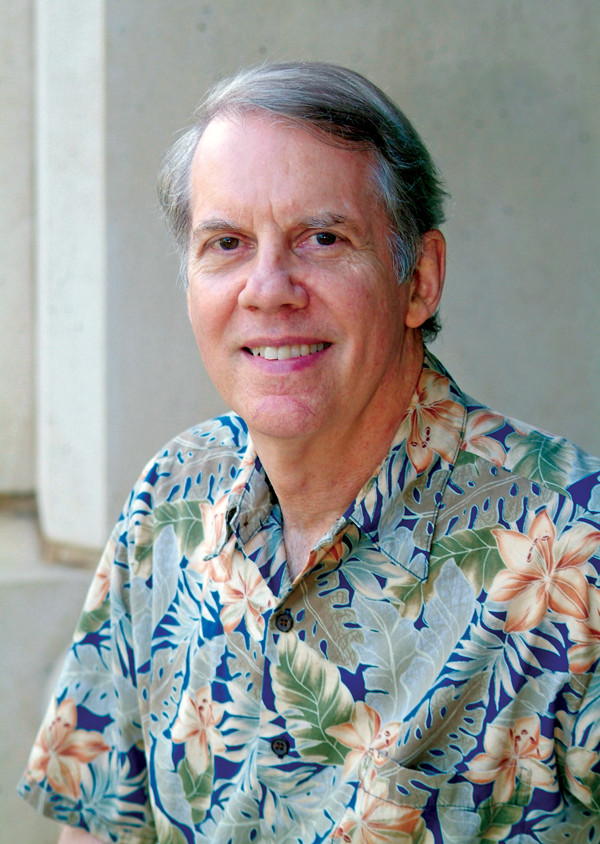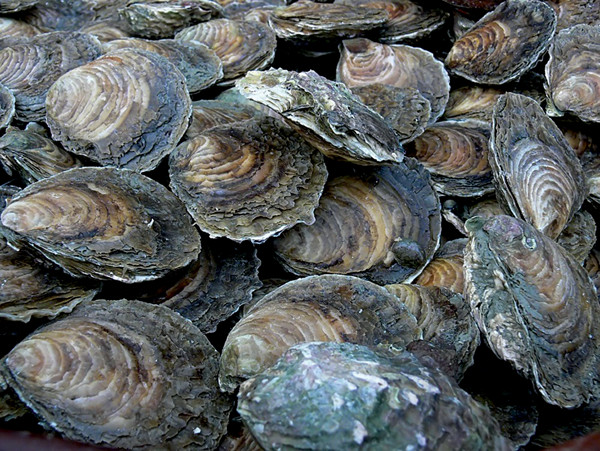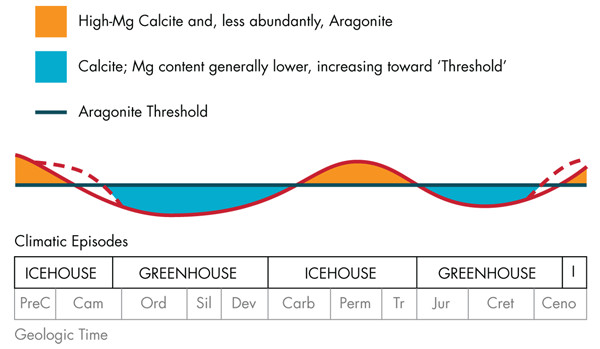
by Timothy Oleson Thursday, May 15, 2014

Paleontologist Steven Stanley. Credit: Steven Stanley
It’s no wonder Steven Stanley says he can’t imagine having pursued any career other than research and teaching in geology and paleontology. After studying under eminent scientists like Alfred Fischer, Colin Pittendrigh and Harry Hess while a student at Princeton and then Yale in the 1960s, Stanley went on to add many of his own paradigm-shifting contributions to our understanding of fossils, evolution and Earth’s environmental history. He has also authored several popular textbooks and has won numerous awards, including the prestigious Mary Clark Thompson Medal from the National Academy of Sciences in 2006 and, most recently in 2013, the Geological Society of America’s (GSA) highest honor, the Penrose Medal.
Don’t be fooled by the use of past tense above, though. Stanley is decidedly not retired. In 2005, after three and a half decades on the faculty at Johns Hopkins University, he departed Baltimore to pursue research full time at the University of Hawaii at Manoa.
EARTH’s Timothy Oleson caught up with Stanley late last fall to ask about his career — past, present and future — and what it meant to receive the Penrose Medal at GSA’s 125th anniversary meeting in Denver last year.
TO: When did your interest in geology and paleontology take hold?
SS: I got interested in it at age 8. I grew up in the country along a river in a beautiful area east of Cleveland in the Chagrin River Valley. There were lots of glacial features there to explore — boulders and cobbles and all sorts of things that had been brought down in till. When I was a bit older, I started collecting minerals. And by the time I got to Princeton, I knew I wanted to major in geology. My sophomore year, I took a course in biology taught by Colin Pittendrigh that had an evolutionary theme. Pittendrigh was famous on campus as a very dynamic lecturer, and that got me excited about evolution. The same year, I took a course with Alfred Fischer in invertebrate paleontology. I’d always thought fossils were just old dead things. But Fischer brought fossils to life, and between my enthusiasm for evolution and new interest in fossils, that’s why I aimed for paleontology.
TO: Did you ever consider following another career path?
SS: No. I discovered I loved doing research as an undergraduate. Alfred Fischer suggested that I work on the Key Largo limestone … for my senior thesis. He went on sabbatical that year, so I ended up having to do my thesis on my own with no adviser, and I discovered I loved doing research. I never looked back; I never thought of doing anything else but research. If I had a time machine and could go back and show myself, as a graduate student, all the topics I’ve gotten into, I wouldn’t believe it.
TO: You’ve spoken before about two renaissances in paleontology occurring during the course of your career. What were they?
SS: One began when I was a graduate student, and a lot of it was happening at Yale where I was: We were making paleontology more biological. People had been using fossils to date rocks and do taxonomy, but they hadn’t really been bringing fossils to life. My dissertation was entirely on the functional shell morphology of living bivalve mollusks. I analyzed about 95 species to find out how their shapes related to their modes of life, so you could then interpret modes of life and evolutionary trends among fossil forms. The second renaissance was studying life of the past in terms of past environmental change — tying paleontology into fields like paleoclimatology and paleoceanography and broadening the whole approach. This is still going on today.

The functional shell morphology of modern bivalve mollusks, such as oysters, was the subject of Stanley's doctoral dissertation. Credit: ©Walwyn, CC BY-NC-SA 2.0.
TO: Has your work been in one of these areas more so than the other?
SS: It’s really been both. I got involved heavily in the punctuational model of evolution, which involves the notion that species don’t change much once they have fully formed. Most change occurs in small populations in local areas very rapidly. And then, once a species expands and becomes more widespread and more populous, it just doesn’t evolve very much. The traditional, gradualistic view was that things are always evolving at significant rates. Niles Eldredge was the one who came up with the idea, but [he and Stephen Jay Gould] thought that the fossil record couldn’t tell which model was correct. I thought we could use the fossil record. So, I devised tests for the models, the results of which favored the punctuational model. Now, we have lots of evidence of stability — of species lasting millions of years. There are some that probably die out very quickly, but if they take hold of a piece of the world, they tend to last. We also have a lot of evidence of very rapid speciation events, really novel life forms having appeared very rapidly in small populations. That’s the other side of the coin.
TO: Where else has your research taken you?
SS: Well, the implications of my research early on were largely biological, which was kind of frustrating because I really think of myself as a geologist, just a biological geologist. But in the late 1990s, I got into looking at changes in seawater chemistry through geologic time, which was quite exciting. My colleague at Johns Hopkins, Lawrence Hardie, had done some brilliant work showing that whether aragonite or calcite — two forms of calcium carbonate — precipitates directly from seawater depends on the magnesium-calcium ratio of the water. When it’s high you get aragonite; when it’s low you get calcite. Hardie reasoned that the magnesium-calcium ratio of seawater may have shifted back and forth through time, and he recognized that the main control is the amount of seafloor spreading going on.
Hardie also knew that most limestone is not formed by direct precipitation; it consists of pieces of organisms like shells and skeletons or, sometimes, whole organisms like foraminifera. And he thought it would be much more exciting if seawater chemistry also influenced biomineralization by organisms, but he didn’t know much about paleontology, so he asked me to look into it. I knew that mollusks had made both aragonite and calcite all the way back through time, but I realized that simple organisms are the major sediment producers and reef builders, and they may be more influenced by seawater chemistry. Maybe specific simple organisms only flourish to produce a lot of sediment or build reefs when seawater chemistry favors them. And I found that the pattern was there. We also did experiments with artificial seawater and modern foraminifera, and we found that their mineralogy changed and their growth rates varied with both the magnesium-calcium ratio and the amount of calcium. This work was a very satisfying way to hook myself back into geology more. It connected plate tectonics to geochemistry to biomineralization to paleontology to sedimentology.

In the late 1990s, Stanley became interested in how changing seawater chemistry influenced simple organisms like foraminifera. This simplified diagram illustrates how the relative abundance of magnesium and calcium in seawater has changed through geologic time; the ratio of these two elements controls whether aragonite or calcite forms as the predominant carbonate precipitate in the ocean. Credit: Kathleen Cantner, AGI, modified from Mark A. Wilson
TO: What was your reaction to receiving the Penrose Medal last fall?
SS: The Penrose Medal hadn’t gone to a paleontologist in 20 years. Alfred Fischer was the last one to receive it, which made it even more meaningful to me. It feels corny to say, but it was humbling when you look at the list of previous recipients.
When you get an award like that, people may think, “He’s over the hill. That’s it.” But I’m still quite active. In my acceptance speech, I said, “People ask me what the medal is for, and I say, ‘well, you could call it a lifetime achievement award. But I’m not done yet.’ So, I give my heartfelt thanks to those bestowing this mid-career award on me.” I wanted to make it clear that I’m not over the hill.
TO: Other than research, what have you found rewarding in your career?
SS: I have not only an intellectual enthusiasm for geology and paleontology, but also a kind of romantic and aesthetic enthusiasm. I love the concept of seas spreading across continents and receding, mountains rising up and wearing down, and groups diversifying and then becoming extinct. I love the scale, so it’s very rewarding for me. And I do enjoy teaching. I like discussing ideas with students and getting them to think. Here in Hawaii, I have a research position. I do a little bit of teaching, but I don’t officially have to teach. I decided to do it that way because I have so many research ideas that I’m still working on, and I only have so many more years to contribute.
TO: What prompted your move to Hawaii?
SS: I never imagined leaving Johns Hopkins; I’d been there for years. Pretty simply, it was that [the University of Hawaii] offered me a huge amount of money for research. It’s very difficult to get grants. The last grant I got, my proposal was one of seven out of 110 that were funded — that’s 6 percent. To not have to worry about that has made my life much simpler.
When I got the offer, I was worried about being isolated [from other paleontologists] here in Hawaii, but I benefit from being near chemists and marine biologists. And I return [to Maryland] from late April to late August every year and go work at the Smithsonian. While there, I’m part of the largest group of paleontologists in the world, so it averages out.
© 2008-2021. All rights reserved. Any copying, redistribution or retransmission of any of the contents of this service without the expressed written permission of the American Geosciences Institute is expressly prohibited. Click here for all copyright requests.